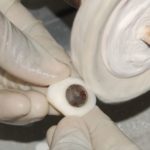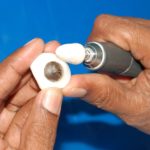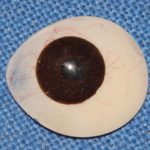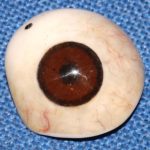What is Prosthetic eye?
An prosthetic eye is an artificial eye that is placed in the eye socket of patients whose eyes have been removed. The eye is made of a durable, high-quality acrylic and it comes in two forms: Stock shell and Custom-Made Prostheses. Stock shells are ready-made, while custom-made prostheses are built to the shape of the patient’s eye socket. The eyes will not restore vision to the patients. However, they can greatly improve quality of life by restoring a normal appearance to the face.
Prosthetic eyes are available for purchase at the Aravind Ocular Prosthetics Centre. Today, this center is one of the leading sites in India for stock and custom-made artificial eyes.







